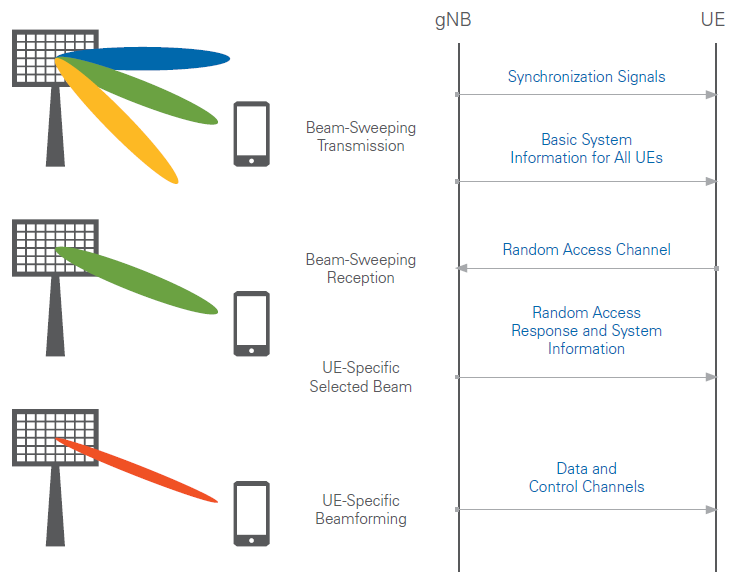The 5G NR implements a new procedure for UE to gain initial access to the gNB. Upon arrival to a new cell coverage area, UE is blind to the location of the beam, ignoring the direction in which the gNB is currently transmitting to begin the network access procedure.
The NR initial access procedure presents a solution for UE to establish communication with the gNB. It solves the problem of finding the gNB in the dark not only for mmWave operation but also for sub-6 GHz omnidirectional operation.
This means that the initial access procedure must work in single-beam and multibeam scenarios. It also must support NR and LTE coexistence.

Beam Management Procedures:
1. Beam-sweeping transmission —The gNB transmits the physical broadcast channel (PBCH) in groups of four OFDM symbols called synchronization signal blocks (SS blocks) sequentially in multiple directions, as depicted by the blue, green, and yellow beams, and maps each one to a different spatial direction.
2. Beam-sweeping reception —The UE detects the best SS block (strongest detected beam) by listening until it matches the beam direction of the transmitter. This allows the UE to decode the best SS block and extract its time index. Knowing when the gNB will use that beam direction again, the UE transmits to the gNB on the physical random access channel (PRACH) at the right time. The gNB now knows in which direction and at what time the UE will transmit UL information.
3. UE-specific selected beam —Once the UE and gNB establish communication on the best beam, the gNB sends the rest of the system information that the UE needs to set up a connection with the gNB.
4. UE-specific beamforming —At this point, the system can switch from general, wider beam coverage to UE-specific coverage with a narrower beam using beam-refining procedures.
Source: NI
